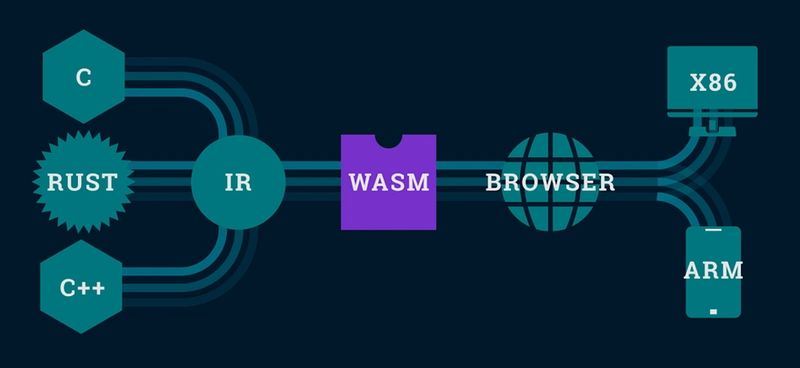The Rise of Cyber Insurance – What CISOs Need to Consider
As we move through 2025, Chief Information Security Officers (CISOs) face an increasingly complex threat landscape characterized by sophisticated ransomware attacks, evolving regulatory requirements, and expanding attack surfaces. Amid these challenges, cyber insurance has emerged as a critical component of organizational risk management strategies. The modern CISO now operates at the intersection of technology, business, […] The post The Rise of Cyber Insurance – What CISOs Need to Consider appeared first on Cyber Security News.
.webp?#)
As we move through 2025, Chief Information Security Officers (CISOs) face an increasingly complex threat landscape characterized by sophisticated ransomware attacks, evolving regulatory requirements, and expanding attack surfaces.
Amid these challenges, cyber insurance has emerged as a critical component of organizational risk management strategies. The modern CISO now operates at the intersection of technology, business, and compliance, balancing technical oversight with strategic risk management.
Cyber insurance offers not just financial protection against potentially devastating cyber incidents but also provides frameworks for improving security posture, access to specialized resources, and support during crisis scenarios.
For today’s security leaders, understanding the nuances of cyber insurance is no longer optional it’s an essential aspect of comprehensive cyber resilience.
The Rise of Cyber Insurance
The strategic importance of cyber insurance extends far beyond simple financial protection.
As cyber threats continue to evolve in sophistication and frequency, CISOs are increasingly recognizing cyber insurance as a mechanism to transform how organizations conceptualize and manage digital risk.
When properly integrated into a broader security strategy, cyber insurance serves as both a safety net and a catalyst for improved security practices.
Cyber insurance provides immediate financial protection against a range of cyber incidents, including data breaches, ransomware attacks, and business interruption losses.
This financial safeguard allows organizations to recover more efficiently from incidents that might otherwise prove financially devastating.
More importantly, it enables CISOs to take calculated risks when implementing new technologies or strategies, knowing there’s a financial backstop in place should an incident occur.
Beyond financial protection, the cyber insurance application process often necessitates a thorough risk assessment, helping CISOs identify vulnerabilities and areas for improvement.
Many insurance providers require organizations to implement specific security controls and practices before issuing coverage, effectively establishing a baseline for security expectations across industries.
This requirement-driven approach often helps CISOs justify necessary security investments to board members and executives who might otherwise be reluctant to allocate resources to cybersecurity initiatives.
Key Considerations for CISOs
When navigating the complex landscape of cyber insurance, CISOs must carefully evaluate multiple factors to ensure they select appropriate coverage for their organization’s specific risk profile and needs.
The insurance market continues to evolve rapidly, with premiums decreasing by an average of 17% throughout 2023, despite a significant surge in cyber and privacy incidents. This dynamic environment requires CISOs to approach cyber insurance strategically.
- Understand and quantify your risk exposure – Before seeking insurance coverage, conduct comprehensive risk assessments to identify critical assets, potential threats, and existing vulnerabilities. Quantifying potential financial impacts provides concrete justification for coverage limits and helps determine appropriate premium levels.
- Define your organization’s risk appetite – Work with executive leadership to clearly articulate which risks the organization is willing to accept, which should be mitigated through controls, and which should be transferred through insurance. This foundational understanding guides coverage decisions and internal security investments.
- Prepare thoroughly before applying for coverage – Insurance providers are becoming increasingly sophisticated in their underwriting processes. Implement robust security controls, document security practices, and prepare to demonstrate security maturity during the application process to secure favorable terms and pricing.
- Evaluate policy terms and exclusions carefully – Pay particular attention to coverage exclusions, especially those related to “acts of war” which may be ambiguous in cyberspace. Understand notification requirements, covered incident types, and claims processes to avoid surprises during an actual incident.
- Review insurer response capabilities and track record – Select insurers with proven experience handling claims similar to scenarios your organization might face. Evaluate their incident response partners, claims processing efficiency, and dispute resolution history.
The insurance application process remains rigorous, though markets are finding greater efficiencies through increased consistency in security questionnaires.
Partnering with knowledgeable brokers who understand both cybersecurity and insurance can help navigate the application process more effectively.
Remember that many insurers now require specific security controls, such as multi-factor authentication, endpoint detection and response solutions, and formal incident response plans as prerequisites for coverage.
Integrating Cyber Insurance into Your Security Strategy
Successful implementation of cyber insurance requires thoughtful integration with existing security programs and broader risk management frameworks.
Far from being a standalone product, cyber insurance functions best when embedded within a comprehensive approach to organizational resilience. This integration demands cross-functional collaboration and strategic alignment across multiple business units.
The modern CISO operates at the nexus of technology, strategy, and compliance, with responsibilities extending beyond traditional technical oversight.
As cybersecurity risks increasingly translate into business risks, CISOs face heightened accountability from both regulators and board members.
Cyber insurance becomes a tool for managing this accountability, providing a framework for risk quantification and transfer that resonates with business leaders.
CISOs should engage regularly with other organizational stakeholders, including legal, finance, and business leadership. This collaboration ensures alignment between security controls, business objectives, and insurance coverage.
Regular tabletop exercises involving representatives from these departments help identify potential gaps in incident response processes and insurance coverage before an actual incident occurs.
Insurance requirements can serve as a powerful lever for driving security improvements throughout the organization. When insurance providers mandate specific controls or practices, CISOs can leverage these requirements to secure resources and executive support for security initiatives.
This approach transforms insurance from a passive protection mechanism into an active driver of security maturity.
Find this News Interesting! Follow us on Google News, LinkedIn, & X to Get Instant Updates!
The post The Rise of Cyber Insurance – What CISOs Need to Consider appeared first on Cyber Security News.










































































































































































![[The AI Show Episode 144]: ChatGPT’s New Memory, Shopify CEO’s Leaked “AI First” Memo, Google Cloud Next Releases, o3 and o4-mini Coming Soon & Llama 4’s Rocky Launch](https://www.marketingaiinstitute.com/hubfs/ep%20144%20cover.png)






































































































































































































![Blue Archive tier list [April 2025]](https://media.pocketgamer.com/artwork/na-33404-1636469504/blue-archive-screenshot-2.jpg?#)
































.png?#)










-Baldur’s-Gate-3-The-Final-Patch---An-Animated-Short-00-03-43.png?width=1920&height=1920&fit=bounds&quality=70&format=jpg&auto=webp#)











![Nanoleaf Announces New Pegboard Desk Dock With Dual-Sided Lighting [Video]](https://www.iclarified.com/images/news/97030/97030/97030-640.jpg)

























































































































![Apple's Foldable iPhone May Cost Between $2100 and $2300 [Rumor]](https://www.iclarified.com/images/news/97028/97028/97028-640.jpg)
![Apple Releases Public Betas of iOS 18.5, iPadOS 18.5, macOS Sequoia 15.5 [Download]](https://www.iclarified.com/images/news/97024/97024/97024-640.jpg)




































































































































